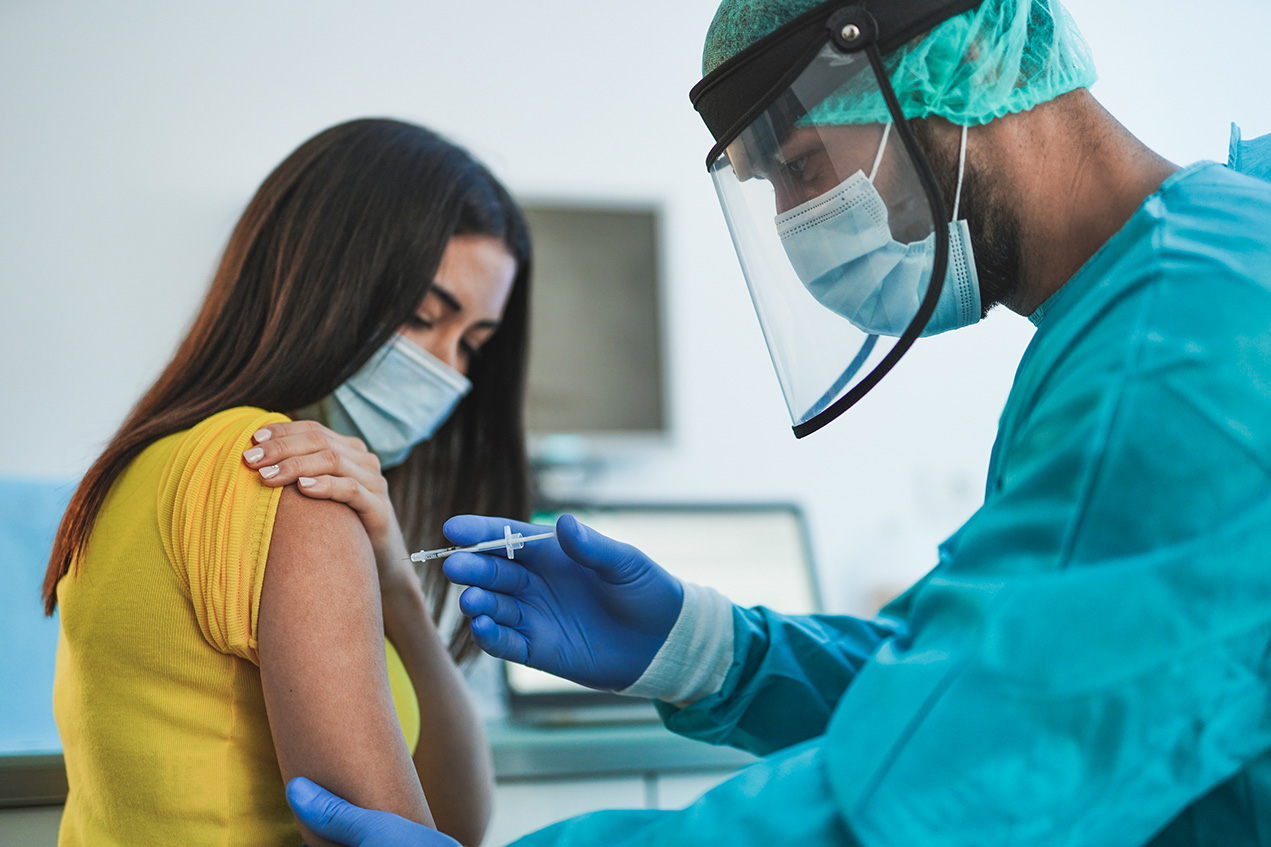The good news: 100 million doses of COVID-19 vaccine had been injected into the arms of Americans by March 19, 2021. The bad news: Black and Hispanic Americans are receiving smaller shares of the vaccine compared to their shares of the population.
“We’ve heard a lot about vaccine hesitancy among people of color, but the bigger issue in the Latino communities in Los Angeles is vaccine access,” said Lourdes Baezconde-Garbanati, PhD, MPH, a professor of preventive medicine, associate dean for community initiatives and a member of the Pandemic Research Center at the Keck School of Medicine of USC. “Many people want to get the vaccine, but they are having issues making an appointment or getting to and from appointments.”
Baezconde-Garbanati, who is chair of the Board of Directors of the National Alliance for Hispanic Health, presented recently to the White House COVID-19 Health Equity Task Force. The task force, which is chaired by Marcella Nunez Smith, MD, MHS, of Yale School of Medicine, was created by President Joe Biden and Vice President Kamala Harris to study and address the disproportionate impact of the pandemic on some of the nation’s most vulnerable communities.
In California, for example, just 21% of vaccinations have gone to Hispanic people, while they account for 55% of cases, 46% of deaths, and 40% of the total population in the state, according to the Kaiser Family Foundation.
During a Feb. 23 virtual meeting, Baezconde-Garbanati and other experts on Hispanic health shared local strategies that are implementable on a national level. Attendees also discussed multi-sector collaborations that will help expand vaccine access and uptake in communities hardest hit by the pandemic.
Helping Latinos, particularly those 65 and older, with appointment and transportation is helping boost vaccination numbers in some of L.A.’s most underserved communities, Baezconde-Garbanati said.
“There is still a digital divide and many people in the ‘65 and older’ category who are eligible to receive the vaccine don’t have an email address or cell phone number needed to get the confirmation for an online appointment,” Baezconde-Garbanati said. “So what we’ve done at Keck is teamed up with community partners to help people make appointments and run shuttles that bring people door-to-door.”
In a joint effort among the Keck School, USC University Relations and the “Stay Connected Los Angeles” educational campaign, Baezconde-Garbanati and her colleagues helped 333 residents from high-risk populations get a COVD-19 vaccination. Only 244 of those people returned for the second dose, prompting follow up calls to bring them back in or find out why they did not return for the second dose. The group has also secured vaccination appointments for 1,950 educators who live or work in East Los Angeles.
In addition to tackling the logistical barriers, Baezconde-Garbanati and the Stay Connected LA team is working with 11 artists in the Eastern area of Los Angeles to develop culturally grounded public health messages that resonate within the Latino culture. Beginning in May, the messages will be displayed outside as murals, bus bench signage, staircase artwork, and online as social media posts, digital murals and GIFs.
Baezconde-Garbanati was invited to share more about this creative messaging campaign to the media group working with the COVID-19 Task Force. She also spoke about vaccine access issues the Latino communities in Los Angeles are facing, and how to maximize the use of resources by working with promotores de salud (community health workers) and community partners that are already trusted sources of information.
Baezconde-Garbanati, who has been studying health disparities in communities of color for over two decades says the work is more urgent than ever. Hispanics in many parts of the country — and in Los Angeles in particular — represent the largest number of COVID-19 cases and of any population group, as well as the largest number of deaths. The National Alliance for Hispanic Health, for which she is the chair of the Board of Directors, just received a CDC grant to support COVID-19 efforts nationwide at a grass roots level, working with community-based clinics and organizations, with the potential of reaching over 15 million Hispanics nationwide.
“We know from the flu vaccine that Hispanic Americans are under-vaccinated, but these old issues of disparities are more critical than ever with COVID-19,” Baezconde-Garbanati said. “If we are to beat this pandemic and return to a new normal, we need to get as many people vaccinated in every walk of life as possible.”
— Sarah Nightingale


